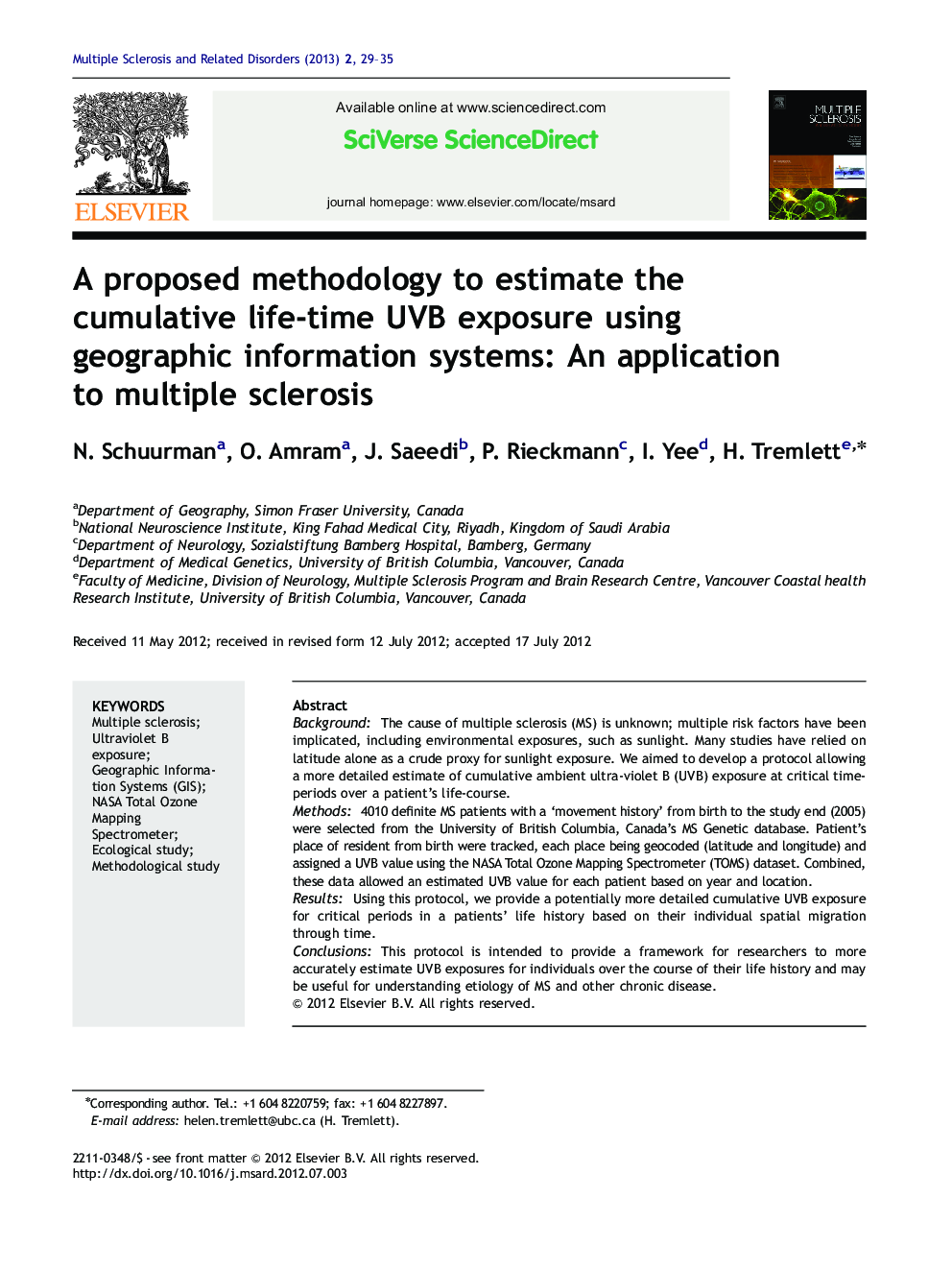| Article ID | Journal | Published Year | Pages | File Type |
|---|---|---|---|---|
| 2823928 | Multiple Sclerosis and Related Disorders | 2013 | 7 Pages |
BackgroundThe cause of multiple sclerosis (MS) is unknown; multiple risk factors have been implicated, including environmental exposures, such as sunlight. Many studies have relied on latitude alone as a crude proxy for sunlight exposure. We aimed to develop a protocol allowing a more detailed estimate of cumulative ambient ultra-violet B (UVB) exposure at critical time-periods over a patient's life-course.Methods4010 definite MS patients with a ‘movement history’ from birth to the study end (2005) were selected from the University of British Columbia, Canada's MS Genetic database. Patient's place of resident from birth were tracked, each place being geocoded (latitude and longitude) and assigned a UVB value using the NASA Total Ozone Mapping Spectrometer (TOMS) dataset. Combined, these data allowed an estimated UVB value for each patient based on year and location.ResultsUsing this protocol, we provide a potentially more detailed cumulative UVB exposure for critical periods in a patients' life history based on their individual spatial migration through time.ConclusionsThis protocol is intended to provide a framework for researchers to more accurately estimate UVB exposures for individuals over the course of their life history and may be useful for understanding etiology of MS and other chronic disease.
► Sunlight exposure and vitamin D have been implicated in altering the risk of developing MS. ► Many ecological studies have relied on latitude alone as a crude proxy for sunlight exposure. ► Cumulative ultra-violet exposure based on spatial migration through time are explored. ► Proposed protocol provides a framework to better understand the etiology of MS.
